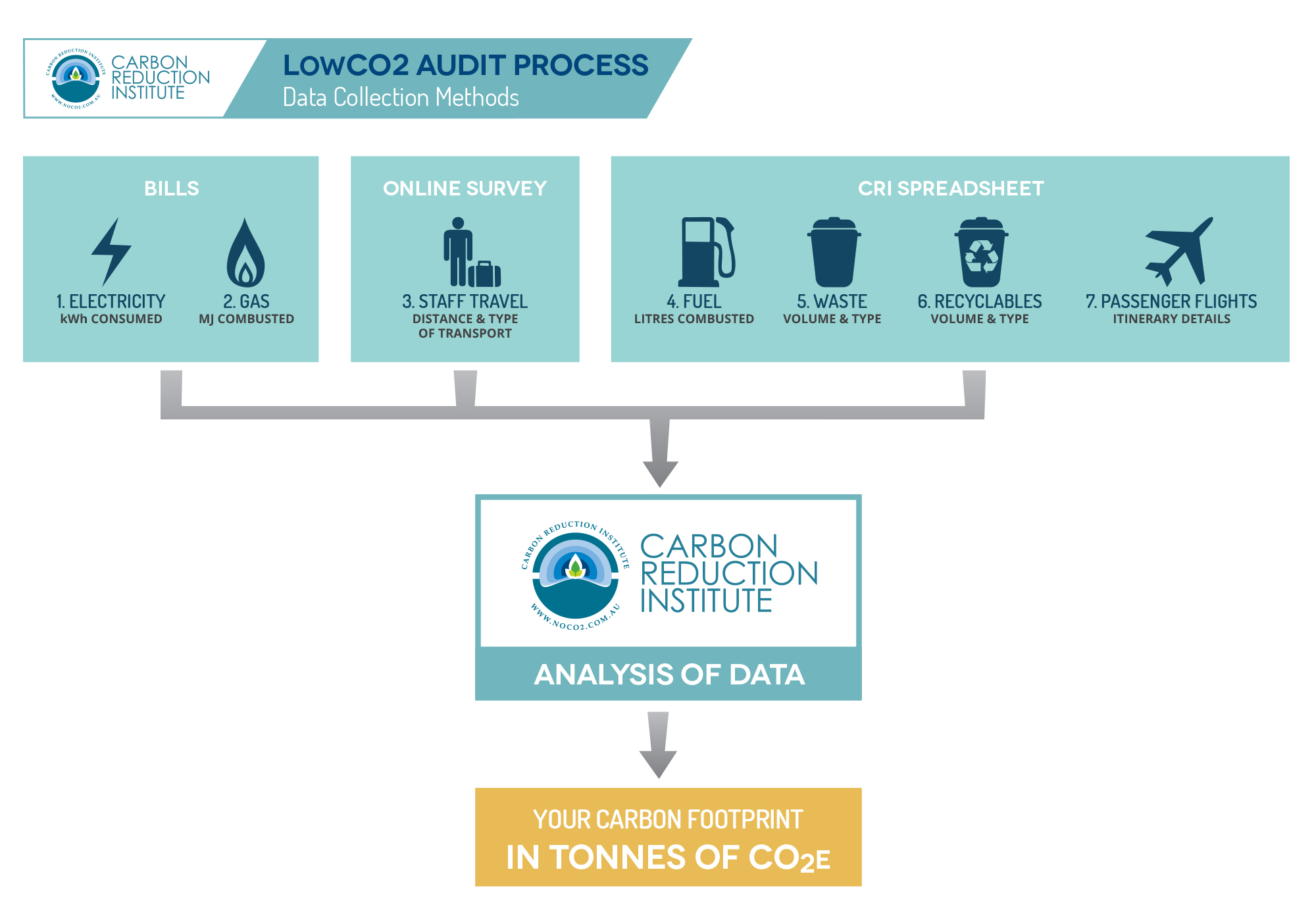
LowCO2 Certification Standard
The LowCO2 certification standard is for organisations that want to reduce their carbon emissions over time; setting annual CO2 reduction targets.
LowCO2 Certification
For businesses in sectors, or circumstances, which decide that 100% carbon neutrality is unrealistic, the option for LowCO2 certification is available using the same internationally recognised criteria.
The organisation still undertakes a greenhouse gas audit; however, it is focused only on the operational impacts of the business, rather than all related emissions.
For example, a travel agency cannot feasibly offset all of its clients’ travel which would be necessary for carbon neutrality, because of the many variables associated with clients’ varied movements while on holiday.
But the agency may still want to offset its direct office impacts and move into the burgeoning LowCO2 carbon economy, which has the added benefit of engaging staff on its sustainability journey.
For many companies, LowCO2 certification, is a far more cost-effective proposition than adopting a full NoCO2 program.
Under international carbon reporting standards, it is also the minimum benchmark in sustainability certification.
LowCO2 certification allows your business to communicate its success in achieving reductions in carbon emissions through a percentage displayed on the certification logo.
The first step to having your business certified as LowCO2 is to have a carbon emissions audit completed by CRI.
The audit quantifies your carbon footprint which becomes the baseline for setting emissions reduction targets.
LowCO2 businesses set an objective of reducing their carbon footprint by a certain percentage from the baseline.
For example, if the audit revealed a carbon footprint of 5000 tonnes of greenhouse gas, then setting a limit of 4000 tonnes would make the business 20% LowCO2. Similarly, if the business set a limit of 2500 tonnes, then the business would be 50% LowCO2.
Businesses are audited measuring emissions that they have direct control over such as freight, electricity and vehicle use.
The audit is completed in strict accordance with the Greenhouse Gas (GHG) Protocol Corporate Accounting and Reporting Standard which is the world’s most widely used and recognised greenhouse gas accounting tool.
The Program includes an ongoing emissions monitoring plan to ensure that certified businesses continue to meet their stated CO2 reduction targets.
Climate change is re-writing business rules and green credentials have become a key influencer in consumer decisions to purchase a product or service.
Nowadays, businesses which act on global warming are experiencing significant benefits and exploiting opportunities that remain inaccessible to those who continue with a ‘business as usual’ approach.
LowCO2 businesses can also participate in the Low Carbon Economy to further reduce their carbon footprint by purchasing carbon neutral products and services. The Low Carbon Economy is also a market for LowCO2 businesses to increase their sales, thanks to the added spin-offs of ‘good corporate marketing’.
To find out more, and for details of carbon neutral and low carbon suppliers, click here.

LowCO2 certification case study
 Working with CRI, hotel bath and beauty product suppliers, Hunter Amenities, underwent a full carbon audit on its facilities and products.
Working with CRI, hotel bath and beauty product suppliers, Hunter Amenities, underwent a full carbon audit on its facilities and products.
From July 1, 2014, the company achieved its first emissions reduction benchmark becoming a LowCO2 (50%) company.
Over the next five years, Hunter Amenities committed to fully offsetting its operating facilities by supporting developing countries through various CRI-sanctioned carbon offset programs.
These allow Hunter Amenities to make a real impact in rural communities and the environment.
CERTIFY YOUR BUSINESS AS CARBON NEUTRAL
The Certification Process
How to certify your business
CALCULATE
We complete a carbon audit of your business to calculate its carbon footprint. Once your business is certified, audits are completed annually.
REDUCE
Your audit will highlight options for emissions reductions. Our simple to use, online reporting tools will help you track the reductions you have achieved.
OFFSET
Offsetting CO2 emissions is done by purchasing high quality carbon credits which are generated as a result of energy efficiency projects conducted around the world.


